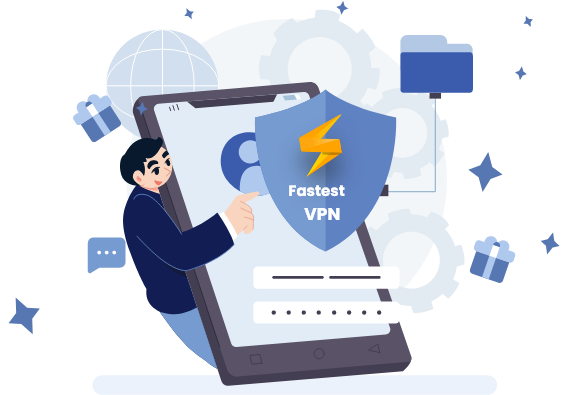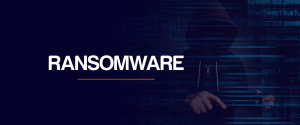

Get 93% OFF on Lifetime
Exclusive Deal
Don’t miss out this deal, it comes with Password Manager FREE of cost.
Get 93% off on FastestVPN and avail PassHulk Password Manager FREE
Get This Deal Now!By Christine Margret No Comments 5 minutes
You’re likely to fall victim to a ransomware attack. Readout FastestVPN’s guide on how to prevent ransomware attacks and keep your personal files out of an attacker’s reach.

Ransomware is a malware attack that encrypts a file and asks the file owner to pay ransom to regain access. The attacker instructs the victim on how to pay to get the decryption keys. Earlier, payments were made via snail mail. Now, cybercriminals ask to pay through cryptocurrency (Bitcoin).
Ransomware can access your system by various means, but malicious spam is attackers’ most favorite trick so far. In this method, attackers use unsolicited emails to inject malware into a victim’s system or files.
Such emails may contain different types of content files to trick users’ to navigate to malicious websites. Most of the email content elements include Word docs, PDFs and other attachments.
Cybercriminals use social engineering to trap users to click or open a malicious source. The social engineering attack uses trusted sources, appears to be an email from a friend or colleague. Victim trusts the source and clicks on the malicious link; later malware gets delivered into the victim’s system.
After malicious spam, the second most popular ransomware attack is malvertising that involves malicious online ads. Such ads don’t need user interaction and automatically redirect users to a criminal web server without a single click.
The server caches user information including location and computer then sends malware or performs a ransomware attack.
Ransomware attacks are not random attacks. Cybercriminals target organizations that may easily fall victim due to security holes. A great example is university networks that are less secure and overburdened.
Moreover, organizations like hospitals and government institutes can also be an easy target for cybercriminals because such organizations will quickly pay to restore access to important data.
Organizations with sensitive data usually convince easily to pay more and that’s the reason that cyber attackers always search for crucial data files.
As the name shows, this type of ransomware encrypts all your files and essential data. Cybercriminals demand you to pay a heavy ransom to restore data access. However, this is the most dangerous form of ransomware because once an attacker takes control of your data, it’s impossible to regain it without paying the ransom. It is not 100% guaranteed that criminals will get your access back even after receiving the amount from you.
Scareware is not the most dangerous form of ransomware. However, this type of ransomware sends a fake notification saying that malware has been detected in your system and you can only fix it by paying a fee. In case, if you’ll not pay, then nothing will happen, all your files will be safe, but the notification will keep popping up on your screen.
It is recommended to always buy authentic antivirus and security software programs to avoid false payment notifications. Check FastestVPN advice on the best antivirus software to protect your system.
Screen locker is another intimidating form of ransomware. It takes away your entire system from you. In this attack, when you open your PC, a screen popup and says that illegal activity has been detected from the system and you have to pay a fine for that.
This message appears to be coming from the FBI, but it’s a ransomware trick.
Yes, ransomware attacks are common in mobile phones too. Usually, these attacks take place via malicious applications. Attackers send malware to the phone via malicious app download and lock your phone after receiving certain app permissions.
Try to discuss things with an IT specialist first or try free decryptors. In some cases, paying the ransom might be your only choice. Keep regular backups of your data.
In addition, if you are using Mac device then contact Apple support community to get the best ransomware protection for mac.
The best way to remove ransomware is to be proactive when it comes to cybersecurity. Use the best cybersecurity tools such as an antivirus software and VPN to stay protected. In case, if you find that your system is getting slow without any reason then run an anti-virus scan.
Create a full backup of your data; you may take advantage of cloud storage. Always scan an external device before using. Lastly, never open a source or email without proper authentication.
Ransomware attacks are dangerous because they lock away your data and ask you to pay an amount. There is no guarantee that your data will recover even after paying the ransom. You can keep your data safe by using cybersecurity tools such as a VPN and antivirus software. After all, a little investment in cybersecurity is far better than paying a ransom.
© Copyright 2024 Fastest VPN - All Rights Reserved.


Don’t miss out this deal, it comes with Password Manager FREE of cost.
This website uses cookies so that we can provide you with the best user experience possible. Cookie information is stored in your browser and performs functions such as recognising you when you return to our website and helping our team to understand which sections of the website you find most interesting and useful.
Strictly Necessary Cookie should be enabled at all times so that we can save your preferences for cookie settings.
If you disable this cookie, we will not be able to save your preferences. This means that every time you visit this website you will need to enable or disable cookies again.


